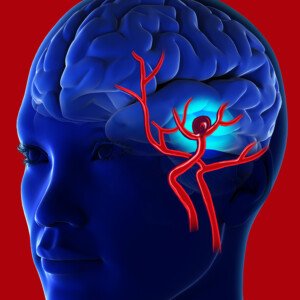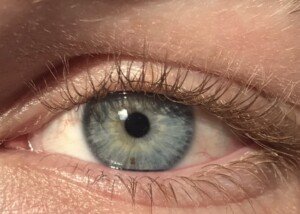
If you need surgery for a brain aneurysm, you should ask about the possibility of avoiding general anesthesia.
There is a safer technique that you should ask your surgeon about.
Must general anesthesia be used for brain aneurysm surgery?
Certainly many people with aneurysms — dangerously dilated blood vessels — have wondered this.
The problem with general anesthesia (other than its usual risks) is that it prevents the patient from providing the surgeon conscious feedback during the surgery.
This feedback is crucial because the surgery can result in ischemia — interrupted oxygen to the brain.
“Patients who can stay calm and stay still during surgery are offered endovascular coiling as a treatment option for aneurysm,” says Atif Zafar, MD, medical director of St. Michaels Hospital in Toronto, Ontario, and former director of the stroke program at University of New Mexico Hospital.
A ruptured aneurysm is known as a hemorrhagic stroke.
Dr. Zafar explains, “More and more aneurysmal cases are being done while the patient is awake.
“There are exceptions, though, and your neuro-endovascular surgeon will discuss with you all the pros and cons before proceeding either way.
“Conscious sedation, where patients are not intubated but given strong sleeping medicines during the procedure, is another approach.”
Safer Brain Aneurysm Surgery: Conscious Sedation
The August 2017 Journal of Neurosurgery reports on a first-time study using conscious sedation rather than general anesthesia for the surgical treatment of cerebral aneurysms.
In the clipping technique for treating cerebral aneurysms, the patient is normally put under general anesthesia.
Other brain surgeries have utilized conscious sedation to allow the patient to give the surgeon feedback.
This way the surgeon knows how the patient’s brain is doing during the operation.
The Study
• Thirty patients with a non-ruptured brain aneurysm were given conscious sedation.
• During the clipping procedure they were given neurological testing.
• During the surgery, three patients – as evidenced by their conscious feedback – developed neurological problems.
• The surgeon was able to make modifications, based on that feedback, to those three patients and prevent permanent neurological complications from ischemia.
Since the time of the study, conscious sedation has become more common as an alternative to general anesthesia for brain aneurysm surgery.
An unruptured brain aneurysm often presents with subtle symptoms, which may be easily overlooked or attributed to other conditions.
Common signs include persistent headaches that may be described as a dull ache or pressure, and vision problems such as blurred or double vision.
Some people might experience localized eye pain or notice that one pupil appears larger than the other.
An unruptured aneurysm can also cause facial pain or numbness, particularly around the eyes or forehead, and may lead to difficulty with movement or coordination.
These symptoms result from the aneurysm pressing on nearby structures or nerves.


























